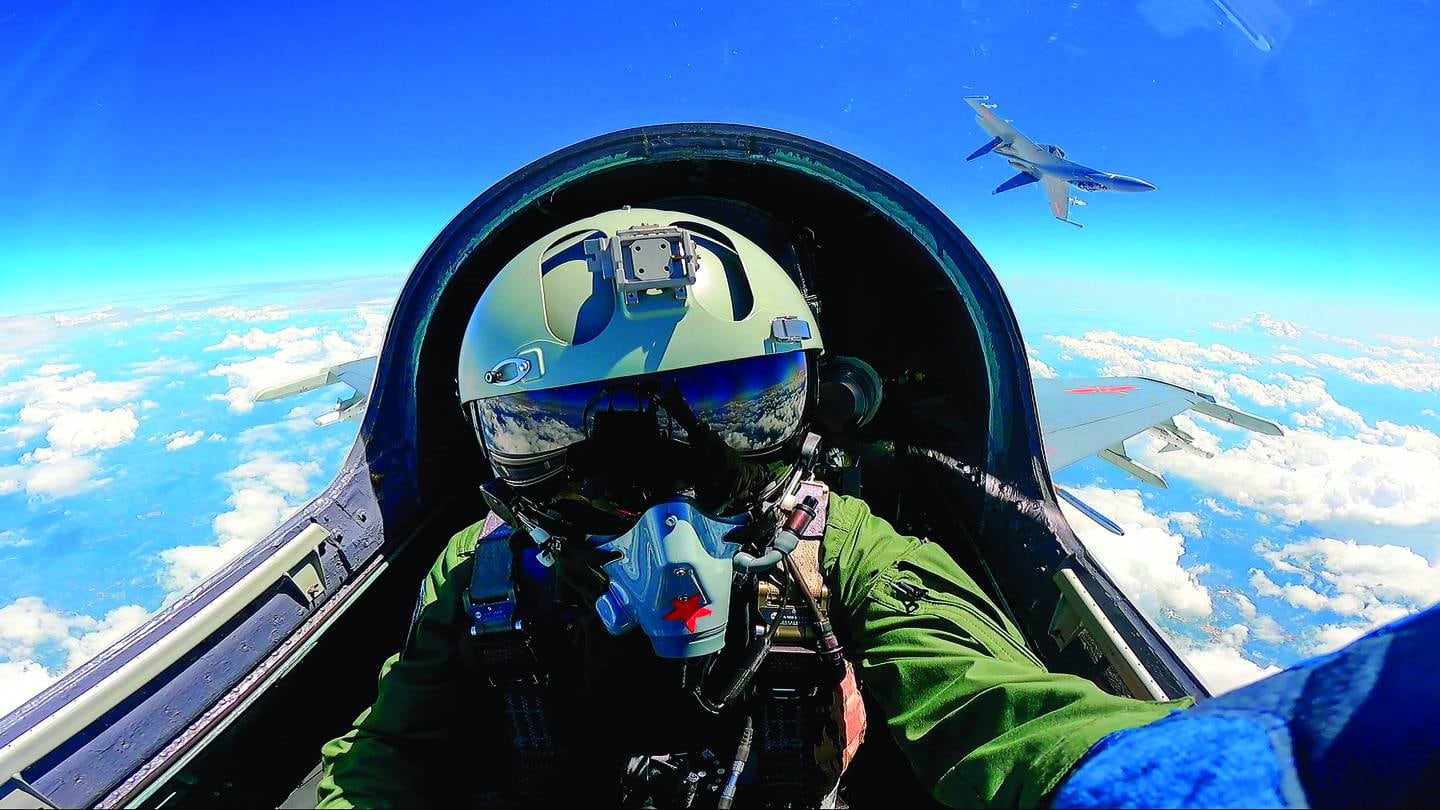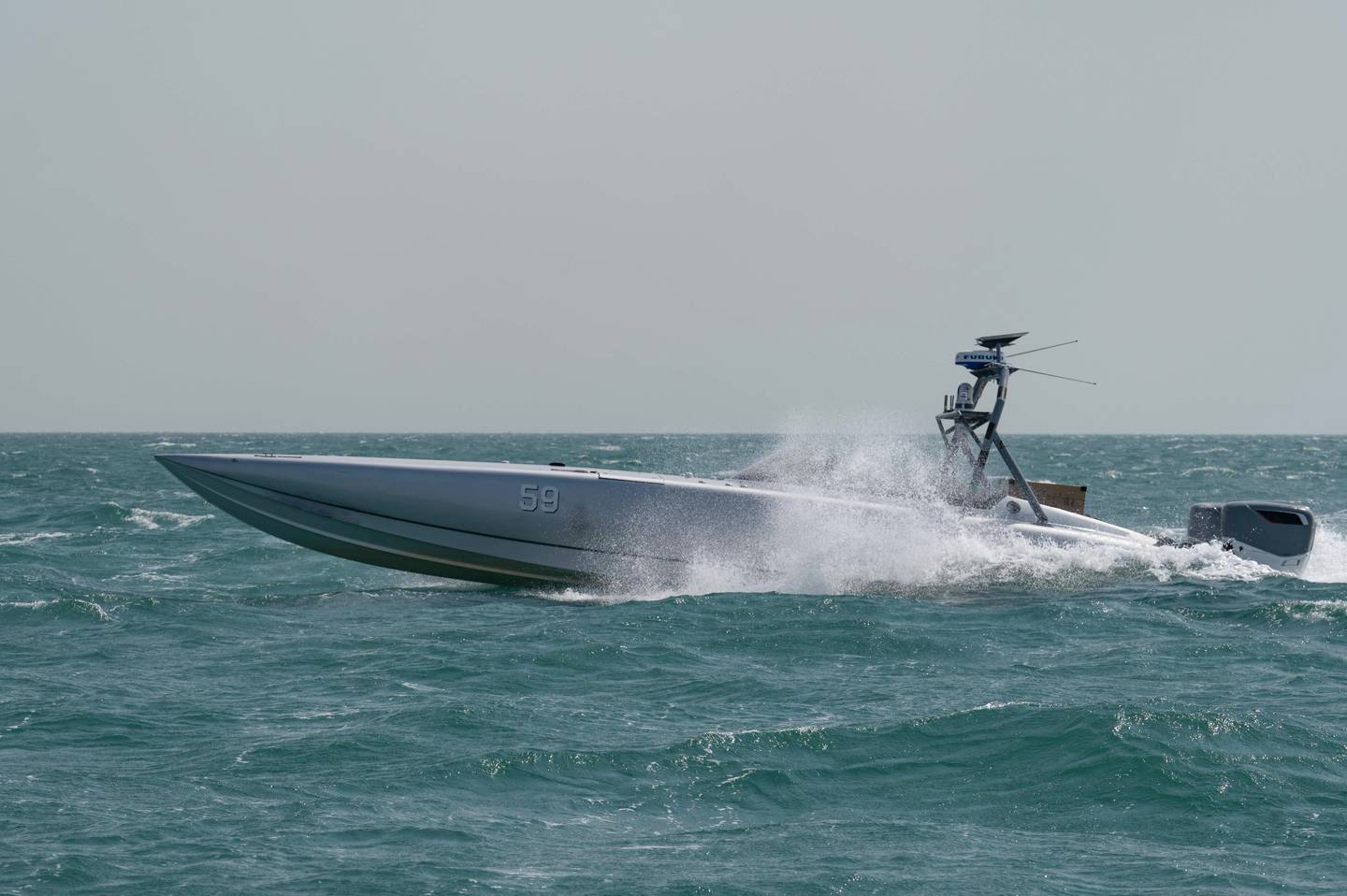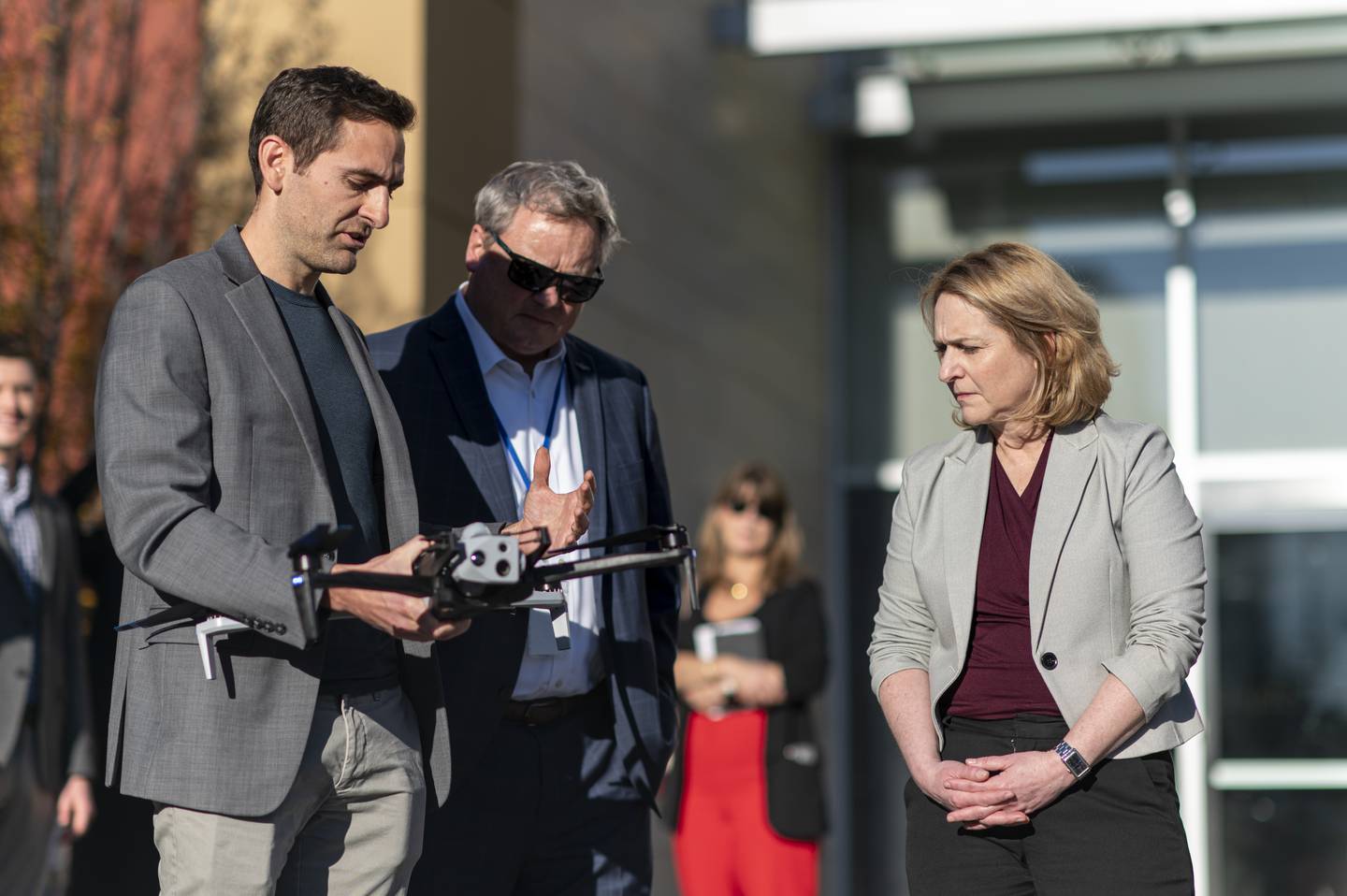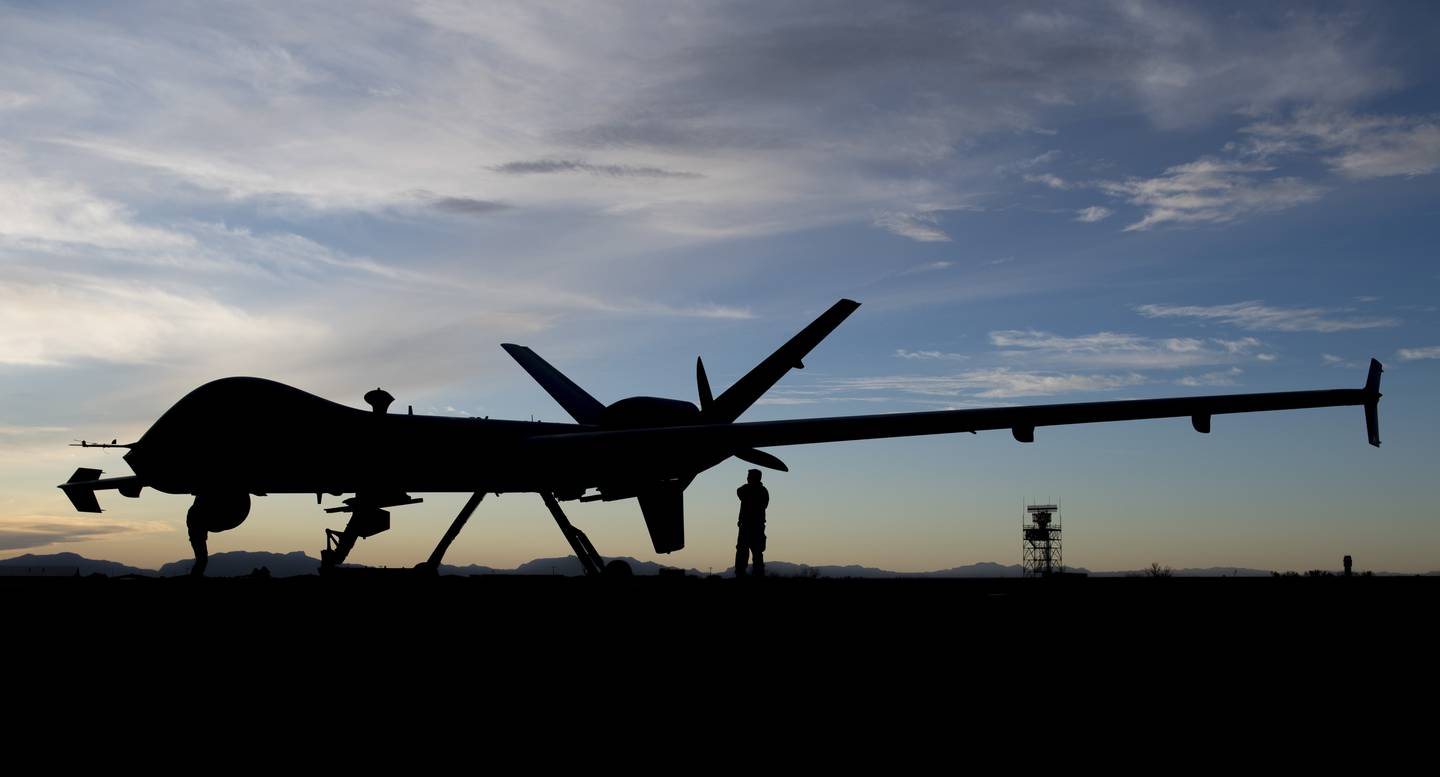WASHINGTON — Clint Hinote didn’t expect to change his mind.
He was back at the Pentagon in August, for the first time since retiring this year. Deputy Defense Secretary Kathleen Hicks had asked to meet with him. She wanted to talk Pentagon innovation, one of Hinote’s favorite topics as a former general and head of Air Force Futures.
The conversation turned to the “valley of death†— the gap between the Pentagon liking a new idea and actually buying it. Usually, defense officials focus on how to narrow that chasm; Hicks said crossing it should be hard.
“The quality of the idea has to be tested,†Hinote remembers her saying. A spokesperson for Hicks confirmed this.
Hinote was convinced: The Pentagon shouldn’t make excuses to move slowly, but only the best ideas should win.
A week later, Hicks debuted the Replicator initiative, a pledge to field thousands of drones in two years to help counter China.
Officials in industry, Congress and the Pentagon have told Defense News it’s a great idea. But most don’t know whether it will work, or merely be an act of Pentagon innovation theater. Replicator is meant to help good ideas across the valley of death. But can it survive bureaucratic and cultural barriers of its own?
“It’s not like the [Defense Department] has been short of ambitious announcements and new initiatives over the past several years,†said Chris Brose, chief strategy officer at the drone-maker Anduril. “The question is: Is this one going to turn into a meaningful procurement program?â€
When announcing the effort, Hicks called it “a big bet.†In fact, the goal is to make a series of wagers — that the Pentagon can quickly buy thousands of these systems; that America’s drone makers can build them; that drones are the right weapons to counter China; and that after two years the Pentagon can do the whole thing all over again for something else.

But for Replicator to succeed, the Pentagon needs partners to bet on it.
Dozens of interviews with defense industry executives, venture capitalists, congressional members and aides, analysts, former defense officials, and Pentagon leaders returned one theme: They are largely approaching the effort with cautious optimism — and more caution than optimism.
Replicator is 20 months away from its deadline to field systems. So far, it hasn’t led companies to increase production, venture capitalists to make new investments nor members of Congress to help fund it. Many in these groups want Replicator to work. Some even say it must, or else the U.S. may fail to stop an invasion of Taiwan, which China considers a rogue province and has threatened to take back by force.
But potential investors want to know Replicator is more than a good idea.
“That’s where we are right now: great concept, but the specifics matter,†said Rep. Rob Wittman, R-Va., a member of the House Armed Services Committee.
‘Open for business’
On a late August morning, Hicks stepped on stage at a defense technology conference in Washington. She was the opening speaker, and her staff had promised reporters a “major announcement†the night before.
The news came in the final third of her speech, framed in three points. First, compared to the United States, China has more people and can build more weapons. Second, if America wants to deter or repel an invasion, it needs new weapons of its own. And third, commercial-style drones — as shown in Ukraine — can close those gaps.
Then she made two promises: a place to go and a way to get there. Replicator would field thousands of drones to meet this need in 18-24 months. The effort would also build a process the Pentagon could repeat for other systems.
“We’re open for business,†she said.
Replicator was news to nearly everyone else. Beforehand, Hick’s office coordinated the announcement with a small group of defense and military officials, including members of the combatant commands. Her office hadn’t shared it widely, even within the Pentagon, until shortly before the conference.
Multiple aides in Congress said they and their members didn’t have advance notice. Some said they heard about it from press coverage. After Hicks spoke, Pentagon acquisition and sustainment officials in the crowd huddled in the hallway to improvise talking points, a former DoD official told Defense News.
Out of more than 20 defense industry executives and investors interviewed for this article, none said they knew Replicator was coming.
“It was … like getting a really, really strong sucker punch,†said one defense technology-focused venture capitalist.
At the Defense News Conference a week later, Hicks elaborated: Replicator wasn’t based on new intelligence, and it would include drones from all domains while mostly relying on the authorities of senior Pentagon leaders. The initiative wouldn’t be a program of record, she added, and would involve the redirection of funds to pay for the multimillion-dollar effort.
There were few further answers.
A month and a half later, the House held a lightly attended hearing with three analysts. Rep. Mike Gallagher’s opening remarks set the tone.
“The American people are still left without any details on Replicator,†the Wisconsin Republican said.

‘Test everything to death’
In mid-November, a member of Congress emailed a defense industry executive, asking for an opinion on Replicator.
It took less than an hour for him to respond.
“How does a company apply to be a part of it? How much funding is allocated for it? What type of technology are they looking for?†the executive responded in the email, shared with Defense News. “Right now it’s baseless PR spin.â€
This is at the harsher end of the sentiment toward Replicator. But tone aside, others in industry and Congress interviewed by Defense News shared similar frustrations.
Lawmakers want to know how the technology could help deter a war around Taiwan. Industry wants to know what the Pentagon wants so they can place orders. Investors want to know which companies need cash to scale production.
Pentagon officials involved in the effort have declined to explain basic parts of its process, from the systems it could field to the funding it could use. Many sources insisted their comments be anonymous, which Defense News permitted in some cases so they could discuss sensitive topics.
Hicks, through a spokesman, declined to comment.

Part of the thinking behind Replicator is that with the attention of senior leaders the department can pick an ambitious target, like thousands of drones fielded in two years, and actually reach it. The Pentagon is a vast labyrinth of process and rules, and bureaucracies don’t often disrupt themselves — unless leadership forces it to happen, which is Hicks’ point.
“She’s serious because she’s putting her own name on that,†said a senior defense official heavily involved in the effort.
Multiple times, while speaking with Defense News, sources compared Replicator to the mine-resistant, ambush-protected vehicle. During the wars in Iraq and Afghanistan, as service members died from improvised explosive devices, then-Defense Secretary Bob Gates made building the blast-proof vehicles his top priority. They were fielded quickly and in large numbers.
“The Defense Department is amazing at responding to tragedy,†the senior defense official said. “We’re kind of built for that.â€
But it’s difficult to respond that quickly without a crisis, officials agreed. Senior leaders have tried it before: Former Deputy Defense Secretary Bob Work’s Third Offset initiative, also meant to find a technical advantage over China, shaped the 2018 National Defense Strategy and innovation across the department, but it didn’t significantly change what the Pentagon bought.
“We have a lot of activity, but we haven’t seen the ignition, where you’re changing over from concept development to capability development,†Work told Defense News.
The actual structure of Replicator relies on two core teams. One comes in the form of the Defense Innovation Working Group, chaired by Defense Innovation Unit chief Doug Beck. This team looks for systems that would help Indo-Pacific Command, and then vets the technologies to see if they can be made in large quantities and perform as promised.
This team’s top picks are then submitted to the Deputy’s Innovation Steering Group, which involves military and department-wide officials, including Hicks. This is where systems become a part of Replicator.
The upshot is a system that’s meant to move parallel to Pentagon procurement, but faster. Replicator isn’t meant to replace the whole acquisition cycle; it’s meant to be the high-risk holding in an otherwise steady portfolio. And Hicks has said attritable autonomy programs will eventually make up half a percent of the Pentagon budget, or about $4 billion.
Officials involved in Replicator often liken it to a change in culture. Many of those managing it day to day come from the defense sector or venture capital, not the traditional world of acquisition and sustainment. With a small chunk of the Pentagon’s budget, so the thinking goes, the department can learn to accept more risk when the moment demands it.
“That is not something that comes easily because we want to be so measured and test everything to death,†Aditi Kumar, a top DIU official working on Replicator, told Defense News.
‘Pick two’
One of Replicator’s largest challenges is funding. Hicks has said the money for the initiative is already in programs across the services, although much of that money is reserved for research, development, testing and evaluation rather than procurement.
The Pentagon is still working on a reprogramming request to help fund Replicator. The senior defense official declined to give an estimate of its time or size.
Such a request will require authority from Congress, which has yet to pass a full-year DoD budget. Without one, the defense official acknowledged funding will be difficult.
Reprogramming also risks upsetting the services, which could lose control of some programs in the process. Hinote, the retired general, said he saw this resistance throughout his time at the Pentagon.
“The bureaucracy will kill Replicator if there is not the continuous push from the top down,†he said.
Another hurdle involves the Pentagon’s ability to work with nontraditional companies at a new pace and scale.
The commercial drone market is dominated by China, in manufacturing and components. American drone makers can’t rely on the very country Replicator is designed to counter for their supply chains, so their manufacturing efforts will take longer.
While many companies told Defense News they are increasing their production lines, none said the Replicator announcement was the catalyst. First, many said, the Pentagon needs to provide actual contracts or at least a better sense of what it wants to buy.
“If you wait until you have that contract from DoD in hand, you’re probably not going to meet that 18- to 24-month timeline,†said Rob Lehman, chief commercial officer at the maritime drone-maker Saronic.
The defense sector is a rapidly evolving habitat in which companies that were disruptors can quickly become the disrupted. It has its own species of primes and smaller contractors. Larger businesses want to grab more of the market share, while smaller ones want a way in.
Replicator tries to solve this problem by selecting companies in batches, every few weeks or months, which allows the department to pick winners while also noting there’s room for more.
But industry executives said they need to know the process for choosing those batches and how often they will come. Some venture capitalists told Defense News they were cautioning their companies away from Replicator until the government provides more details.
Still, some of these critiques are hypocritical, said Sam Gray, head of the Silicon Valley Defense Group, a networking organization. For years, the Pentagon has heard it’s not adopting new technology fast enough. Now it’s trying to move faster and accept more uncertainty, and the response has been a demand for more details.
“It can be fast, cheap or good,†said Gray, who formerly worked in the Navy’s innovation office. “Pick two.â€

‘It’s going to cost you’
The way most people interviewed by Defense News see it, though, is that all three are necessary. If China wants the ability to — although not the orders to — invade Taiwan by 2027, as U.S. intelligence suggests, programs like Replicator could help stop a war.
“It’s very, very important,†said Work, the former deputy secretary.
This represents another challenge: finding systems that actually help deter a war over Taiwan.
DIU said it would post a solicitation for the effort in December, but it had not done so by press time. Hicks told reporters the first tranche for Replicator would be selected that month, though the systems may be classified. The per-unit cost, she said, will range from the tens of thousands to the hundreds of thousands of dollars. Each system should be designed to last three to five years.
In mid-December, Hicks traveled to Silicon Valley, where she met with about 10 defense companies to discuss Replicator. Later, she visited two others — Kodiak Robotics and Skydio — where she rode in an autonomous Ford F-150 and watched a demonstration with small drones.
Mark Valentine, president of Skydio’s global government business, said Hicks focused on the company’s ability to produce its drones at high volumes.

The services spent the first few months after the announcement nominating systems of their own that could be useful to the program. Doug Bush, head of Army acquisition, told Defense News the service put forward unmanned aerial systems on the larger side. Air Force Secretary Frank Kendall has said publicly that Replicator may benefit from smaller aerial drones.
Multiple defense industry executives and investors told Defense News that small drones will be a part of Replicator’s initial purchases. No one working on the program would confirm specific systems, but the senior defense official said “that will likely be an area that we focus on.â€
It’s hard to picture how small drones could help defend Taiwan, where U.S. forces would need to travel hundreds of miles to even reach the island nation, analysts and former defense officials said in interviews.
Indo-Pacific Command leader Adm. John Aquilino has said his goal is to have systems that can “blind, see and kill any adversary that decides to take us on.†Unless small drones are stored on Taiwan itself — something analysts previously suggested — it would be difficult to deploy them.
In part for that reason, multiple industry sources said DIU Enterprise Test Vehicle — a drone meant to cover at least 500 nautical miles, and for which the tech hub released a solicitation in September — would be part of Replicator.
How to actually use these kinds of drones is something Schuyler Moore has tried to answer for years at U.S. Central Command, where she works as the chief technology officer.
Before, she was the chief strategy officer for Task Force 59, one of three innovation cells within the command focused on the kinds of drones now targeted by Replicator. That task force grew from a handful of maritime drones to a fleet of more than 20, and now touts some 25,000 testing hours.
“It is one thing to test an unmanned surface vessel in reasonably calm waters,†she said. “It is entirely another to have an unmanned surface vessel operate for months at a time in the hot, salty, sandy, windy conditions of the Middle East.â€
Moore said Central Command has volunteered to be a “sandbox†for Replicator, where operators can adjust the systems.
Among other issues, the Pentagon will need to learn how to deploy these vehicles, to operate them alongside other systems, and to make them work together with a shared command-and-control network — no easy feat when they’re made by multiple companies.
Overcoming these will in part decide whether Replicator is successful. It’s the difference between a “thing†and a “capability,†said Michèle Flournoy, who served as undersecretary of defense for policy during the Obama administration.
Since the Israel-Hamas war began in early October, Iranian proxies and regional militia groups have targeted U.S. forces in Iraq and Syria. In addition, two carrier strike groups and a host of American air defense batteries are helping Israel clear the sky — against ballistic missiles, artillery and drones.
This conflict has validated America’s air defense, a senior military official told reporters in early December, speaking on the condition of anonymity due to the sensitivity of the topic. But the “exchange ratio†— the cost of what the U.S. shoots down compared to the cost of the interceptor — changes when drones are involved.
“Missile on UAV — that works pretty well, too,†the official said. “That’s a very different calculus, though, because that’s expensive.â€
The crisis is making officials consider what unmanned and counter-drone systems they’ll need, and how quickly they’ll need them.
The idea behind Replicator — that the Pentagon should buy more, expendable systems rather than few, exquisite ones — has circulated for years. But Hicks launched the initiative following a series of trips where she watched exercises that included cutting-edge technology.
Especially influential was a trip over the summer to watch Operation Northern Edge in Hawaii, according to multiple defense and industry officials.
A month after that exercise, Hinote was visiting Hicks in her office, where Replicator started.
“If you’re going to disrupt from top down as a leader, it’s going to cost you something,†Hinote said. “It’s going to cost you time. It’s going to cost you political capital.â€
Replicator is meant to be a repeatable process. If it’s successful, future Pentagon officials — perhaps even after Hicks’ time in the department ends — could use it as well.
But at a breakfast with reporters in mid-November, Hicks said there’s no separating the two: Innovation only goes as far as the people leading it.
“Leadership will always matter,†she said.
Courtney Albon and Megan Eckstein contributed to this report.
Noah Robertson is the Pentagon reporter at Defense News. He previously covered national security for the Christian Science Monitor. He holds a bachelor’s degree in English and government from the College of William & Mary in his hometown of Williamsburg, Virginia.





